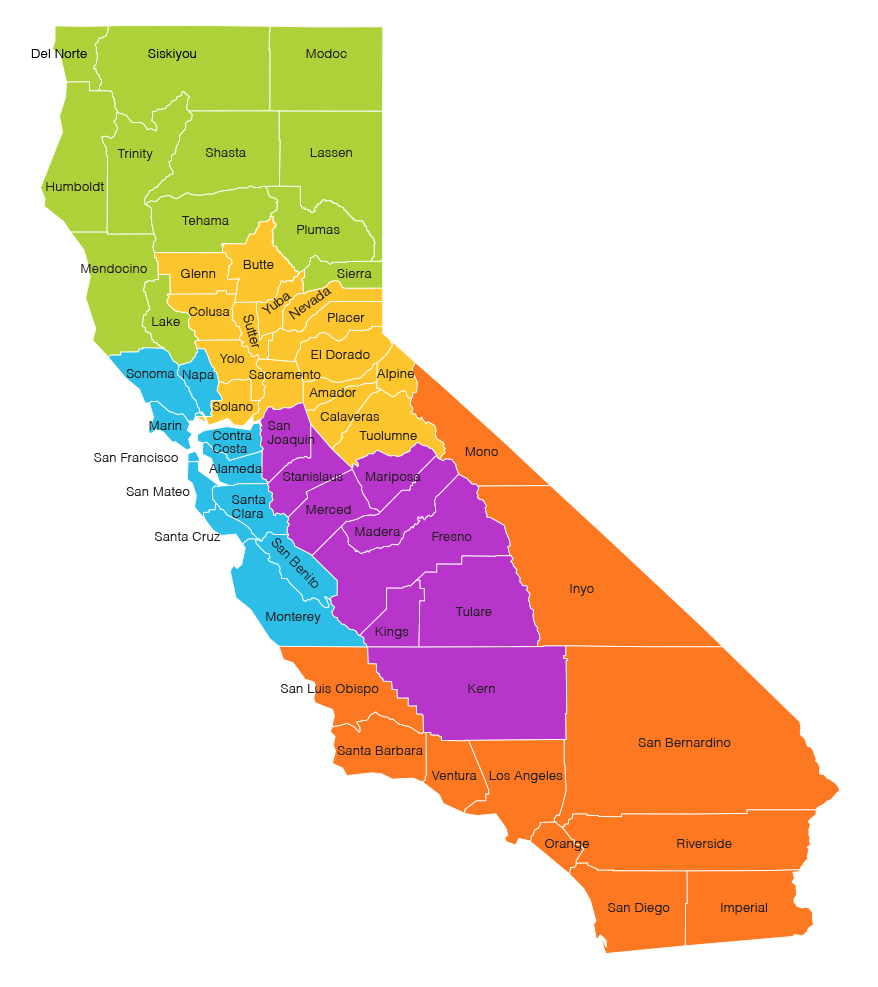California’s 58 Counties: History, Facts, and Travel Tips
California’s 58 Counties: History, Facts, and Travel Tips
Blog Article

Trying to find out what the exact county count in California is? You’d be surprised how many people ask the same question. From trivia nights to travel planning, the answer—58—comes up again and again, yetthose two digitsis just the first layer of a deeper tale.
The Golden State’s 58 counties createa tapestry of extremes: surf-washed beach cities, high-elevation wilderness zones, fruit-laden interior valleys, and historic mission settlements. None of these counties lacks a unique backstory, moulded byimmigration waves, cutting-edge innovation, and relentless population booms.
Over the next few pages, we’ll unpackhow the state’s county map froze at fifty-eight, the services counties deliver day-to-day, and the record-holders—from the tiniest to the most populous. By the end, you’ll know the facts—and be ready to ace any quiz with confidence.
Origins of California’s 58 Counties
When California joined the Union in 1850, the map looked nothing like today’s. An unprecedented population boom compelled legislators to carve out new counties. Within twenty years, the count had expanded toward more than fifty counties, and in 1907 the last adjustments were ratified, cementing the official total of 58.
Capitol archives indicate that many break-away regions sprang out of three major pressures:
- Sheer distance left settlers days from the nearest courthouse.
- Tax disputes pitting ranchers against merchants triggered secession campaigns.
- Language and immigrant communities demanded tailored governance.
In less than seventy years, the political map hardened. In modern times, every effort to create county #59 stalls, prompting analysts to call the era of county making a finished chapter.
Landscape and Climate Diversity Across California Counties
Plot a route from foggy Crescent City to border-side Calexico, and you’ll thread through dozens of ecosystems. Ocean-brushed jurisdictions soak up fog-cooled summers, while basin counties in the Central Valley battle drought cycles.
- Alpine districts such as El Dorado, Tuolumne, and Sierra host ski resorts.
- Delta counties balance peat islands and orchards.
- Channel-coast administrators like Santa Barbara license film crews on beaches.
Such variety explains the stark fiscal gaps between counties. Topography dictates everything from wage levels to weekend hobbies.
Behind the Scenes at the County Level
Within the state’s tiered system, cities tackle local bylaws, but counties shoulder the bread-and-butter functions that keep daily life humming. Cradle-to-grave—marriage licenses, tax rolls, voter registries—all sit at the registrar of voters.
Elected sheriffs patrol unincorporated land, while county benches hear civil suits. Public-health branches administer vaccination campaigns. Budget battles fill chamber galleries with activists.
Spotlight: Los Angeles County’s Scale
Los Angeles County alone employs 100 000+ workers, illustrating how adaptable the system is. One template doesn’t fit all when populations range from under 1 200 to over 10 million.
In the end, county halls act as middle managers between Capitol and curbside. Knowing their role guides newcomers navigating paperwork.
Where the People and Money Are
California houses over 39 M souls, but that population collects in dramatic clumps. LA County by itself hosts more than one resident in four. On the flip side, high-elevation Alpine could fit its voters into a high-school gym.
- Largest population: Los Angeles
- Smallest by residents: County of Alpine
- Biggest footprint: San Bernardino County
- Smallest area: San Francisco
Fiscal bandwidth mirrors population spread. Silicon Valley counties boast per-capita GDP rivaling small nations, while interior ag counties face commodity price swings. Such economic polarity informs legislative redistricting every decade.
Memorising these recordsmakes relocation plans simpler: county borders redraw home-buying budgets and business licences.
The Ultimate California County Circuit
Adventure-hungry drivers, bagging all 58 jurisdictions ranks as a top geo-challenge. The classic route begins in San Diego, rolls up the Pacific Coast Highway, swings through Big Sur, then threads through nut groves and tomato fields, before ascending into the Sierra Nevada for ghost towns and mining museums.
Three-Day County Clusters
- South-land Loop – Border to wine country; 10 counties in four days.
- Valley Ribbon – Grapes to rice paddies; eight hours of orchards.
- Lava Beds Detour – crater-rim roads; hidden hot springs.
Cap off the circuit in Imperial, after two thousand kilometres of asphalt. At that point, you can confidently claim you know “how many counties California has”—having grabbed selfies at every line marker.
Frequently Asked Questions
Below you’ll find concise answers to the most common county-related queries.
What is the total number of counties in CA?
Government documents list 58 counties—a total locked in for how many counties in california over a century. Check any authoritative source, and you’ll find the same figure: precisely fifty-eight.
Which county has the largest population in California?
The population heavyweight is Los Angeles County, housing roughly one in four Californians. From Hollywood to high tech, a mix of industries continues to fuel steady inflow.
What is the smallest county in California by population?
The crown for smallest population goes to Alpine County, rarely crossing the 1 200-resident mark. High-elevation geography keeps growth modest, making it a haven for solitude seekers.
Largest county by land size?
Geographic titan San Bernardino County encompassing deserts, mountains, and metro suburbs alike. You can drive for hours without leaving its borders—crossing ski slopes, dunes, and bedroom communities.
What historical events fixed the number at 58?
Early statehood growth pressures split larger districts into smaller units, with the final adjustments ratified in 1907. While secession talk appears now and then, no plan has passed statewide hurdles.
Can new counties still be created in California?
On paper, state statutes permit county formation, though the process is arduous. A break-off region must gather local signatures, win a majority vote in each affected county, and secure legislative approval. Hence, California has remained at 58 for generations.
Which responsibilities fall to county governments?
County governments deliver core public services: property assessments, public hospitals, welfare programs, and jails. Remove counties from the equation, and civil society would struggle to operate.
Report this page